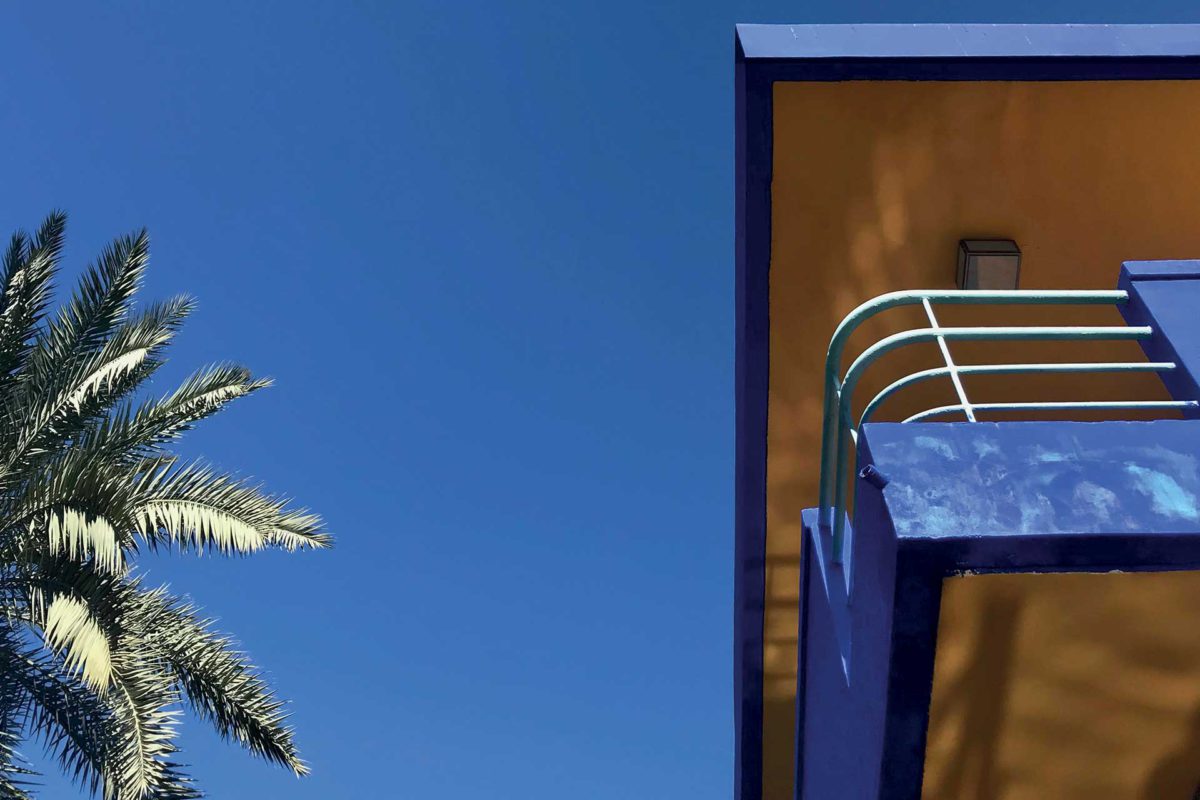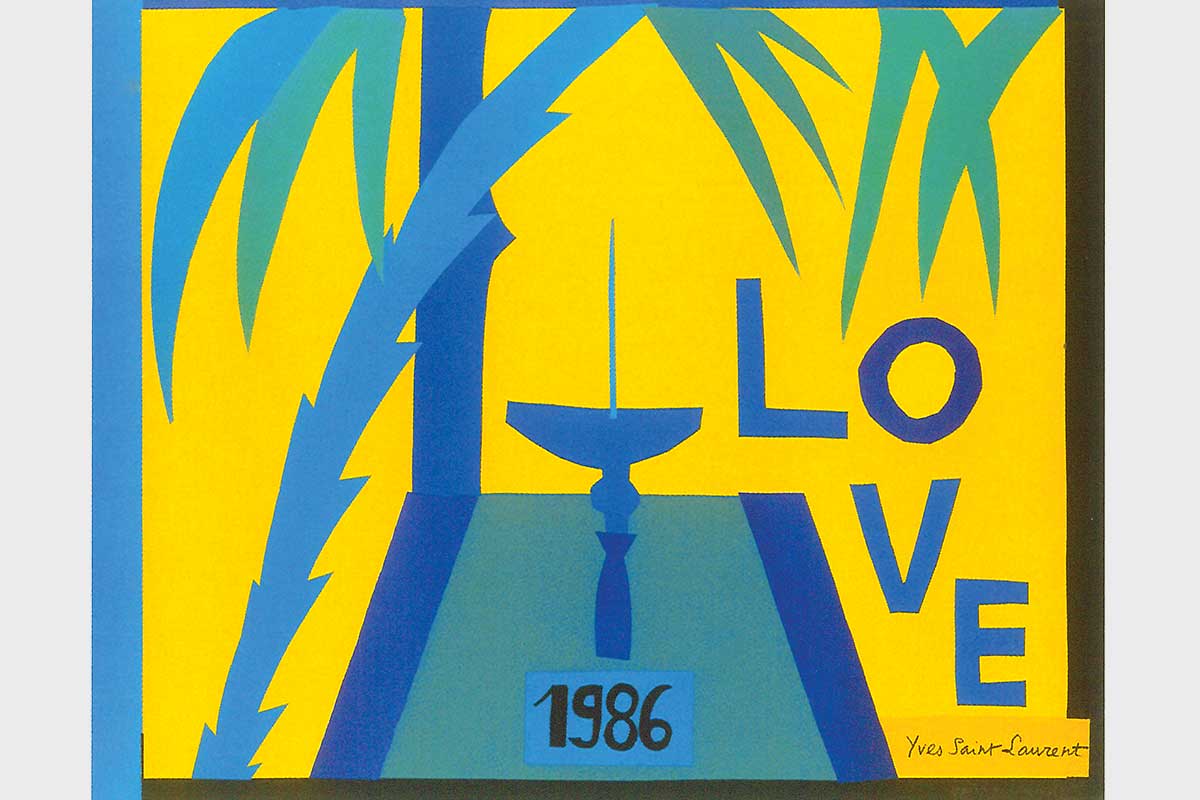Olivier Flaviano is the director of the Musée Saint Laurent Paris. He assumed the leadership of this Parisian institution in 2016 and worked for one year with Pierre Bergé
Yves Henri Donat Mathieu-Saint-Laurent
Long before becoming a couturier and the creator of icons like the pea-jacket and of evergreens moved from the male to the female world, like the safari jacket and the trench coat, the tuxedo and the blouson, Yves Henri Donat Mathieu-Saint-Laurent, born in Orano, Algeria on 1 August 1936 (under the sign of Leo, like Coco Chanel), could be defined as a creative spirit in every sense of the term. He was a forerunner of style whose strength of expression remains universal even today, extending it well beyond fashion, through a social dimension and a recognizable imagery.
In 1983, Diana Vreeand dedicated a retrospective to him at the Metropolitan Museum of Art in New York; an exhibit that forever changed the status of fashion, which up until that moment had never been considered an art form. The Foundation was established in 2002, the year that Saint-Laurent retired from the runway, and the doors of the museum opened in 2004, with the exhibition Yves Saint Laurent, Dialogue avec l’Art, which in primis embraced the mission of documenting, preserving, and promoting the designer’s opus. «At the Musée Yves Saint Laurent in Paris, we have approximately seven thousand garments, fifteen thousand accessories and fifty thousand croquis, paper artifacts, objects, fabric samples, photographs, and various other documents; the legacy of a forty-year- long creative journey», says Olivier Flaviano.
Lampoon reporting: Yves Saint Laurent’s Dialogue avec l’Art exhibition
«A body of work that was acquired thanks to the foresight of its founders. Beginning in 1964, just two years after the first collection was presented at Rue Spontini 30 bis on 29 January 1962, up to 2002, Yves Saint Laurent, built up an archive year after year, that includes a selection of ‘Models de défilé’, or rather garments that have been finished and are ready for the runway. Complete samples, without variations made for clients, as frequently happened in the field of Haute couture. It was common practice for these articles to be given to the most respected model, or to the model most connected to the fashion house as compensation. We know the names of the people who purchased them, the names of the fabric suppliers, how many hours it took to make and embroider them, even who were the employees involved in the various stages. The Museum, at Avenue Marceau 5, is located in the historic headquarters of the Maison, a hôtel particulier dating from the Second French Empire, to which YSL moved into from Rue Spontini in 1974. Monsieur Yves’ studio is guarded like a living organism: papers and color pencils clutter the surface of the desk, as though he just got up from his chair. Even his tortoise shell glasses are there. Nearby, a narrative mood- board comes to life; drawings, photographs, sketches, samples, swatches of fabric, the portrait of Yves by Bernard Buffet, and a reproduction of a Rembrandt are hanging on the walls; rolls of silk, work canvases, tracing paper and other such objects are scattered around the room. The museum institute of Marrakech, near the Jardin Majorelle, must also be remembered. As Pierre Bergé loved to say, we must transform memories into a project. In 1997 the Fondation started to create an archive using technological preservation methods, like large temperature-controlled closets equipped with an anti-dust apparatus. The idea of a museum was not yet well-articulated, but in 1980 the collection and the archives were already merging into a Département du Patrimoine».
The Collection Mondrian
Crossing the threshold of the museum, beyond its stone facade and welcomed by Andy Warhol’s portrait of Yves Saint Laurent, one enters the heart of a maison: amidst Napoléon III splendor, gilded details, reflective plays of light, boiserie, and green damask. The esprit is that of Haute couture, with its rituals and secrets; the cult of beauty that becomes elegance and that translates aesthetic codes and Proustian reflections into reality. YSL is a capsule of references, freely weaving together eras and contemporary influences, colors and geometry, east and west, stylized allure and sensuality.
The exhibit entitled L’Asie rêvée d’Yves Saint Laurent, revolved around the theme of an imaginary or ‘immobile’ journey, as Saint Laurent defined them. Roughly fifty Haute couture models inspired by the cultures of China, Japan, and India were displayed alongside Asian artwork on loan from private collectors and from the Musée Guimet in Paris. It was an exotic immersion far removed from any kind of folklore. Monsieur Yves did not like to travel. He visited China in 1985. His was a relentless cerebral journey, a psychological and aesthetic longing, a dream. «All I need is a book of images in order for my spirit to become one with a location or a landscape», wrote Saint Laurent. «[…] I feel no need to actually go there, so much have I dreamt about it…».
Olivier Flaviano continues: «The Collection Mondrian and Saint Laurent’s relationship with Claude Lalanne. Everyone is familiar with the Robe Mondrian, a symbolic element of the autumn-winter 1965 Haute couture défilé, Hommage à Mondrian, with its bag-like lines and straight cut that recall elements from the 1950s. A knee-length and sleeveless lainage dress, characterized by the geometric design of bright colors, a white arrhythmia, and a black grid. The garment was inspired by the painting Composition C (No. III) by the Dutch artist from the De Stijl movement, dating 1935. The accent was placed more on the architectural côté and on the volumetric density, than on the decorative aspect of this pictorial reference. Photographed by David Bailey, the Robe Mondrian is among the most well-known creations by YSL and is part of an entire era of experimentation. In 1978, Pierre Bergé and Yves Saint Laurent purchased the canvas of Piet Mondrian’s Composition with Blue, Red, Yellow, and Black, which was prominently displayed in the library of the Parisian residence at 55 rue de Babylone. For Saint Laurent it was like mobilizing the canvases of these modern artists. However, he emphasized the danger of garments becoming paintings, made sacred, detached from the flow of real life. ‘Poliakoff and Mondrian,’ said YSL at the time, ‘brought me youth and freshness, they taught me pureness and balance.’ As for the exhibit’s second field of study», emphasizes Flaviano.
Yves Saint Laurent’s relationship with Claude Lalanne
Inaugurated at the end of January 2019, it’s based on the relationship between Yves Saint Laurent and Claude Lalanne. This was a collaboration that began when Pop Art was just catching on, at the beginning of the 1960s. The Lalannes, François-Xavier and Claude, husband and wife, positioned themselves as an antithesis to Pop, seeking their own dimension through their magical creations based on nature, their sculptures in bronze, brass, copper, or steel, representing animals and phytomorphic figures. In 1965 the artists were commissioned to design the Bar Oeuf (purchased in 2009 by Carla Fendi when the furniture belonging to the couturier was sold at auction), first installed at Place Vauban, and subsequently in the library on Rue de Babylone.
The Music Hall on Rue de Babylone, immersed in a suite of mirrors and bronze nymphs, is lit by candles to exalt the sense of fairytale wonder. In 1969, for the maison’s autumn-winter collection, Claude Lalanne created, on the mold of Veruschka’s body (Übermodel of the moment), a pair of metallic corsages laminated in gold. They look like pieces of surreal Amazon armour belonging to the Greek ‘Barbarella’ as she goes off to conquer the moon. They were presented on two lightweight muslin tunics, one in white and one in electric blue, and created a kind of short circuit of eras and evocative references, a métissage of classic roots and science fiction, half sculpture and half visionary projection. The creative crossing didn’t end there», concludes Olivier Flaviano. «Claude Lalanne also designed galvanized copper jewelry for the YSL Maison».
Musée Yves Saint Laurent
Paris, 5 avenue Marceau, 75116 Paris – France
The Musée Yves Saint Laurent Paris is currently closed. It will reopen starting June 17, with the opening of the exhibition Yves Saint Laurent: Behind the scenes of haute couture in Lyon.




















